In mid to late summer in the northeastern US, several species of large solitary wasp (belonging to the families Sphecidae and Crabronidae) frequent gardens, parks, and other open spaces. Despite their threatening appearance, solitary wasps are totally harmless. They are more interested in hunting other invertebrates–like spiders, flies, and bees–than they are in you. Solitary wasps are carnivores that capture and paralyze insects or spiders to feed their young, with many species specializing on particular types of prey. Unlike hornets, yellowjackets, and other social wasps, solitary wasp females build and provision nests independently of one another. Nesting locations differ among species and may include a variety of cavities both above and below ground.
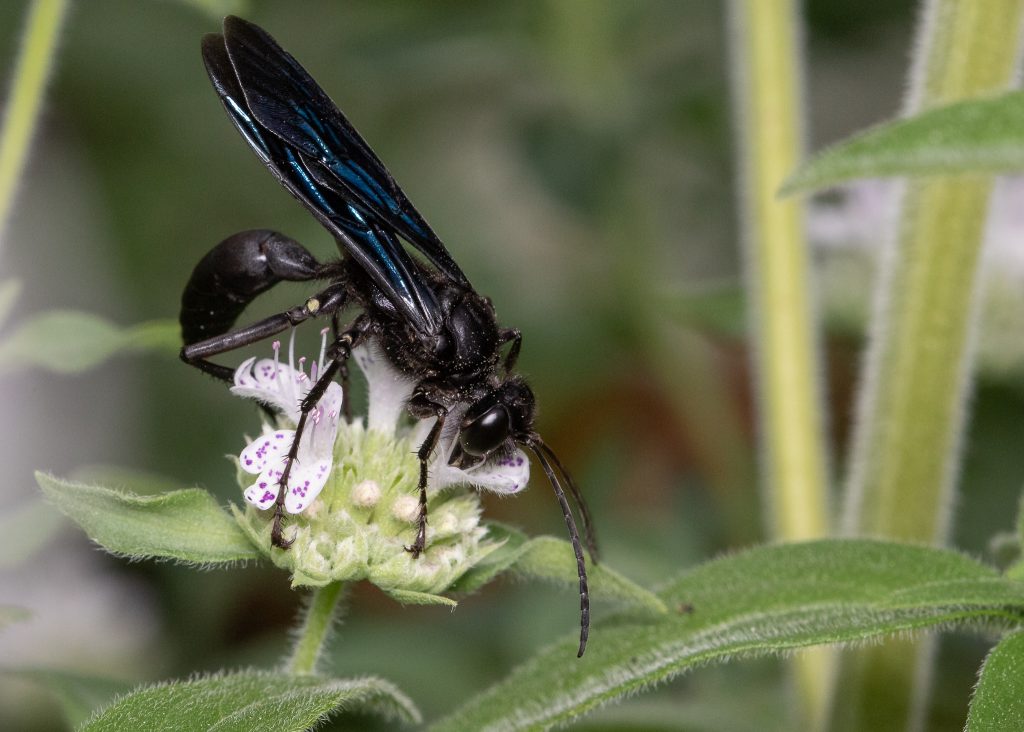
Digger wasps in the genus Sphex nest in the ground. In the northeast, the Great Golden Digger Wasp (Sphex ichnumoneus) and Great Black Wasp (Sphex pensylvanicus) are two particularly common species that can be seen drinking nectar from milkweeds, mountain mints, and other flowers. Females hunt katydids, stinging and paralyzing their prey before dragging it back to the nest. Although they are solitary, digger wasps sometimes aggregate, with many females constructing nests in close proximity. Each nest consists of a main tunnel with a number of side tunnels, each of which ends in a brood cell in which an egg is laid after the cell is provisioned with several katydids. When bringing paralyzed prey back to the nest, female Sphex leave the prey item outside the nest entrance while investigating the nest interior before dragging the prey down. If the prey item is moved slightly, the wasp will retrieve it and inspect the nest yet again. Sphex’s automatic nest-checking routine has captured the attention of several philosophers interested in the contrasting ideas of instinct and free will, inspiring the coining of the word “sphexish” (used to describe actions that appear thought-out and deliberate but are instead actually quite mindless).
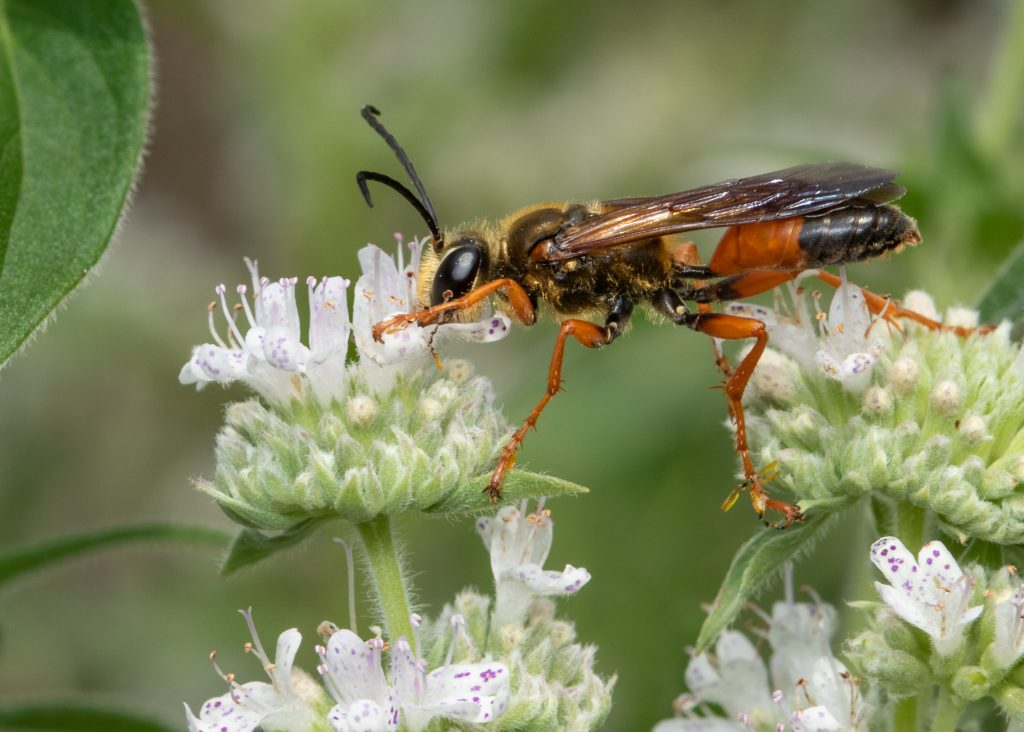
Isodontia grass-carrying wasps are a common sight around houses, gathering dry blades of grass and stuffing them into a crevice to furnish a nest. Grass-carrying wasps are predators of katydids and tree crickets and, like the digger wasps, leave their prey alive, but paralyzed, for their larvae to feed on.
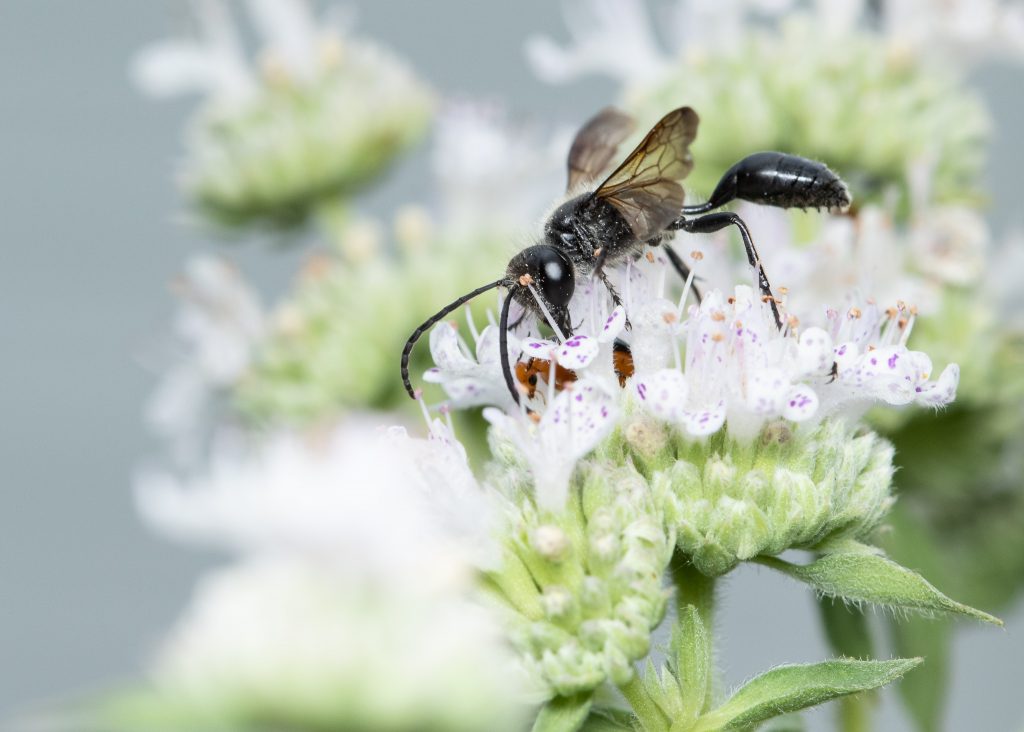
The giant cicada killer wasps (Sphecius sp.) are hard not to notice. Reaching lengths of an inch or more, these are among the largest wasps in North America. Even so, these formidable-looking insects are typically harmless. Females are not aggressive and although males may behave aggressively, they are unable to sting. Cicada killers sometimes form nesting aggregations, with many females utilizing the same patch of bare soil while males hover about looking for opportunities to mate. As their common name suggests, cicada killers hunt cicadas, paralyzing them and then flying back to their nest while carrying a prey item heavier than themselves. The wasp larva consumes the cicada and emerges as an adult the following summer.
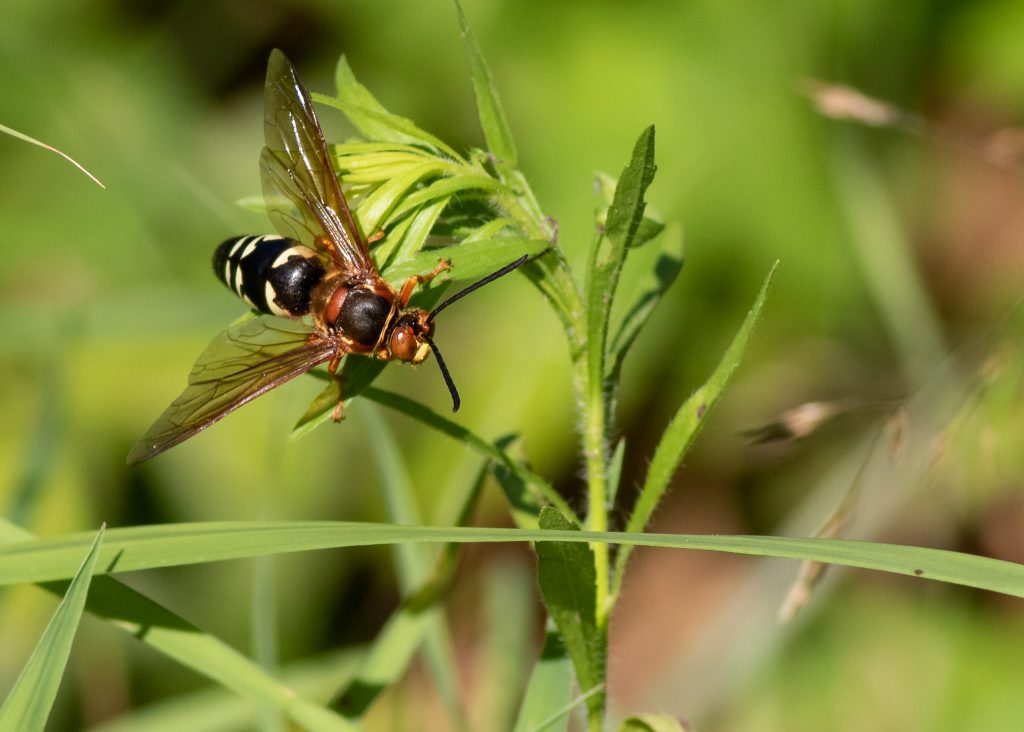
Other solitary wasps hunt soft-bodied prey. The thread-waisted wasps in the genus Ammophila are a group of impossibly-skinny caterpillar predators. They can often be seen flying with a caterpillar slung underneath their body, toting their paralyzed prey back to an underground nest. Interestingly, after completing their nests and filling the tunnel with sand, some thread-waisted wasps have been observed using a small stone held between their jaws to tamp down soil at the former nest entrance, a behavior sometimes considered to be an example of tool use!
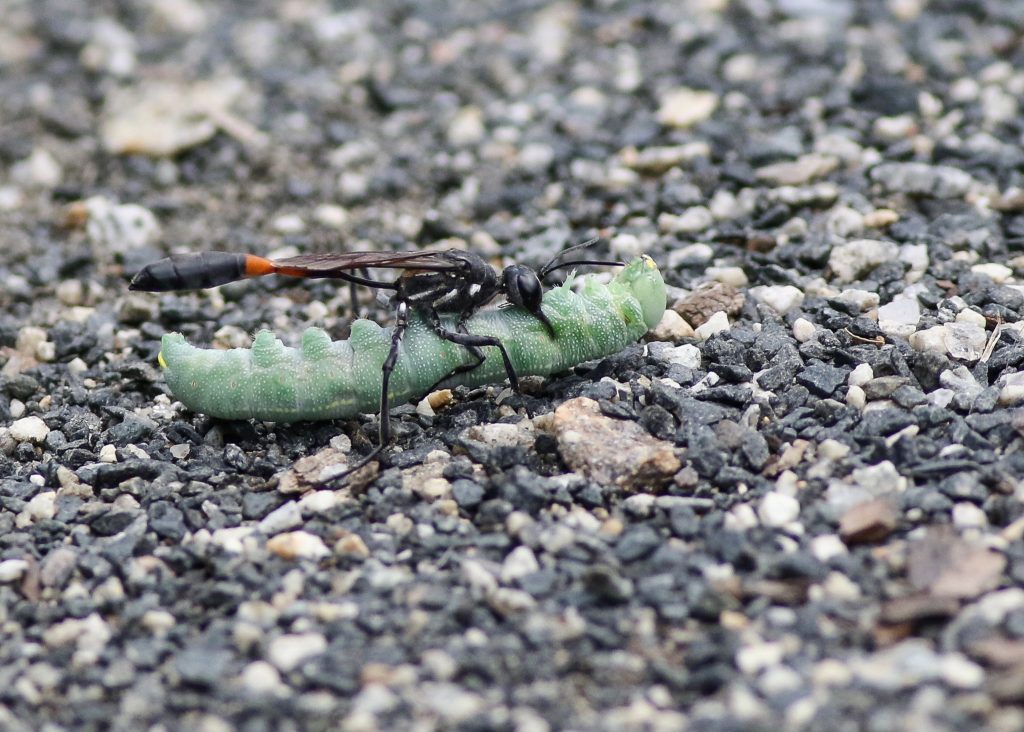
Though they may lack the charisma of butterflies, bees, and other favorite garden insects, solitary wasps are a diverse group that play an essential part in regulating numbers of herbivorous insects. By leaving patches of bare soil for nesting and planting milkweeds (Asclepias sp.), mountain mints (Pycnanthemum sp.), joe-pye weeds (Eupatorium sp.) , and other favorite nectar plants, you can encourage the presence of these beneficial insects in your yard and enjoy their pest-control services and enthralling behaviors.
Photo Credits: Max McCarthy


Out the other day with kids in a forest. The kids were trying to avoid the “icky-ticky” river (left side of a split gully) and trying to get into the “golden river” (the dapple sunlight, right side, Combined with clay from 5 ft bank of the gully left a golden hued imprint on the much cleaner creek). Anyway, I was mesmerized by the aphids ( if phish and been fans of aphids would they have named their band afids?) and what in gods green earth evolutionary reason does this lbino looking mite have a Liberace-esque plume of white feathers on its head and why do they have the singular white whip extending out of it? Ok so some JCATs (junior counselors at training) were chase the kids with a “unicornix” ( unicorn/gun/stick) to much giggling and delight. Suddenly, “I found a way down into the golden river!”. Then I hear from a jCaT “yikes (changed word) it’s one of those flying blue things. So, long story short, it’s a giant wasp carrying something and flying into a hole in the bank of the gully. I’m instantly scared cuz those things are huge but I’m equally fascinated. I watch as the wasp goes in and out of holes (looking for correct hole?). I finally see that the wasp is carrying what appears to be a Katydid. (Could it be a cicada? It was long, flat and bright lime green like a Katydid but I didn’t get too close). Anyway, as I turn to the sound of laughter and the thud of running feet, I see an aphid, Seemingly floating On a beam of dappled sunlight and about to alight on some hydrogen bonds. “Jim, I know why the aphids have the feather” chimed in a jCaT in a tone that was both reverent and satisfied at being involved in an “older” conversation. “Why’s that” I say watching the aphid move away. “It allows them to float.” Yes it does jCaT. Yes it does.
-30-
@adventurewalkers
#celebratingthelostartofstopping
Very interesting ,thank you for the pictures and information.
I have what looks like a single lone Guinea wasp here on my porch in NC with it’s tiny nest doesn’t seem to ever leave the nest does just fine doesn’t bother any thing then there’s another nest about five foot from there with the same type wasp having about four members being docile as well so I leave them be figure they aren’t a problem having there place in nature but I question is being a single solitary wasp alone of this type normal behavior?
Great observation! The guinea wasps are part of a group of wasps known as paper wasps. These social wasps have a solitary stage in their life cycle where females overwinter alone and emerge in spring to start colonies by themselves. If the females are successful, they will grow a small colony with daughters to help forage and care for brood. So, yes, many social insects (including bumble bees!) have a solitary phase of their life cycle, guinea wasps included.